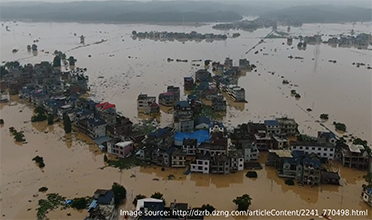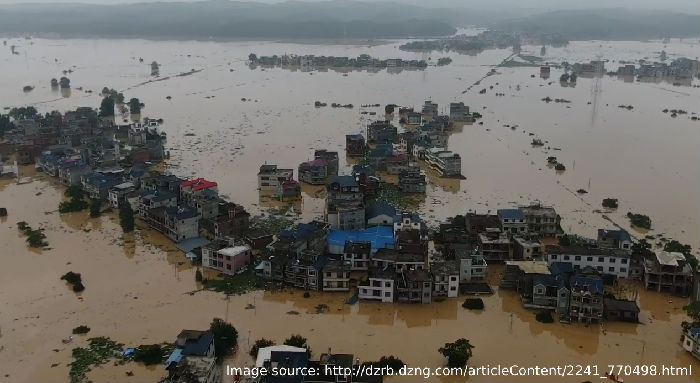



4.Implications for China
4.1 Strengthen planning and policy management
As mentioned above, strengthening planning and policy management can help improve people's ability to cope with the health risks caused by climate change. The formulation of climate adaptation policies and health promotion policies can mitigate the impact of climate change on people's health both directly and indirectly. Climate adaptation policies are based on a systematic and scientific approach to climate change monitoring, prediction, and risk impact assessment. This can clarify the development goals, implementation principles and strategic directions for cities to mitigate and adapt to the health risks caused by climate change, and make specific arrangements and follow-up plans to enhance the ability of cities and residents to cope with the risks and fundamentally reduce the health risks caused by climate change. At the same time, the implementation of health promotion policies will help promote physical activity among residents, improve their health level, and increase their resilience to climate change-related health risks. In addition, based on international health impact assessment, specific mechanisms for urban health impact assessment in China should be explored, taking into account the local characteristics of China, and widely incorporated into the system of urban evidence-based decision-making tools. Urban response policies should be proposed from the perspective of climate change-induced health risks to guarantee the positive impact of planning policies on residents' health. In the policy formulation process, extra attention should be paid to vulnerable groups such as the elderly, children and low-income people to strengthen the protection of vulnerable groups and reduce the health risks caused by climate change.
4.2 Optimize planning and design strategies
Optimizing planning and design strategies from the perspective of health risks caused by climate change can effectively improve the quality of urban and rural habitats and better cope with the multiple health risks caused by climate change faced by cities. First of all, macro strategic guidance should be given to territorial spatial planning at all levels, i.e., to strengthen climate adaptation and prioritize public health, and strengthening the implementation of various types of land and facility planning related to urban public health safety, such as disaster prevention and mitigation and emergency public health services, in territorial spatial planning at all levels. Secondly, in the face of complex public health risks, urban spatial planning should not be limited to the planning and regulation of a single spatial system, but should be based on the existing comprehensive disaster prevention special planning, street planning and green space system special planning, formulate climate adaptation special planning and health promotion special planning, and carry out integrated coupling to avoid the loss of integrity due to the fragmentation of each special planning. Among them, the climate adaptation special plan reduces and effectively responds to the health risks caused by climate change in the city by adopting appropriate planning strategies, including building a comprehensive transportation network and high-quality transportation infrastructure, and constructing a comprehensive green infrastructure network. The special health promotion plan should promote the improvement of urban residents' comprehensive health level and risk coping ability. This includes promoting the construction of a healthy pedestrian network, improving the open space network and enhancing the quality of open space, increasing inclusive design, hierarchically allocating medical facilities, reserving open space and focusing on the combination of leveling and fighting, etc. In addition, it should also combine local characteristics and clarify the urban construction indicators of specific lots, not only from the perspective of health risks caused by climate change to increase the relevant control indicators, such as the total annual runoff control rate, the proportion of green roofs and the proportion of cool roofs. It also includes feedback on existing basic control indicators, such as street connectivity, green coverage, and the proportion of parkland. The final result is a set of design guidelines to deal with health risks caused by climate change, including adaptive building design guidelines, healthy street design guidelines, green infrastructure design guidelines and open space design guidelines.
4.3 Innovative planning techniques
Innovative planning techniques can promote cities to respond to climate change-induced health risks more easily and efficiently. First, climate adaptation construction technologies, such as adaptive architecture, sustainable drainage facilities, and green roofs, should be tapped. High-tech construction technology tools can be used to reduce building temperatures, improve urban drainage efficiency, and increase the number of places for urban residents to move around. This effectively mitigates the direct health risks from urban heat and floods, while at the same time mitigating the indirect health risks from climate hazards by enhancing the physical activity level of residents. Secondly, we should develop a health risk capture system from the perspective of climate change, build a comprehensive monitoring system, combine the results of the "dual evaluation" with the characteristics of the physical and geographical background, and evaluate the health risk susceptible areas, susceptible people and sensitive infrastructure caused by climate change according to local conditions. The current situation information will be incorporated into the existing risk assessment system. In addition, big data technology can be extensively used to provide residents with necessary health service data such as hospital location, hospital size, and location of green areas or parks by building cell phone applications, etc. It also assists residents in self-health monitoring, provides early warning before climate disasters occur, and provides necessary health recovery services.
4.4 Encourage Multi-dimension Implementation Strategies
The multi-dimension Implementation strategy is an essential guarantee for the concrete implementation of policy management and spatial planning. Encourage multiple implementation strategies. First of all, we should promote multifaceted cooperation. In the context of multi-party cooperation at international, national, regional and local levels, integrate multiple planning areas such as disaster prevention, greening, infrastructure, roads, and economic and social policies. Integrate the opinions and demands of multiple stakeholders such as government, enterprises, infrastructure providers and citizens. Conduct major thematic studies on health risks caused by climate change to learn from multiple experiences. This will provide the basis and support for formulating countermeasures and eventually lead to a permanent and long-term planning strategy. Secondly, it is also necessary to strengthen public education and publicity. The public should be educated about the health risks caused by climate change through education and training, advertising and festivals, and regular emergency drills to raise public awareness and alertness to the risks. Finally, the implementation process should pay full attention to the people who are susceptible to health risks caused by climate change. Before the occurrence of climate disasters, we should provide key warnings to these groups, suggest precautions and measures that can be taken, and maintain real-time contact with vulnerable groups such as empty nesters and people with disabilities during climate disasters. We will prioritize the optimization of housing and public spaces in urban areas where people vulnerable to climate change health risks congregate.
5 Conclusion
In the context of the increasingly severe global climate situation, the health risks caused by climate change are gradually attracting attention, and the relevant practical experiences at home and abroad are becoming more and more abundant and mature. The New Urban Agenda points out the need for countries to take effective measures to address the health risks caused by climate change, but integrating it with urban planning policies still needs further research. This paper takes three cities, New York, London and Rotterdam, as examples. The article summarizes the specific strategies for addressing climate change-induced health risks in four aspects: planning policy management, planning design strategies, planning technology tools and specific implementation strategies, and proposes inspirations for China. At present, China's climate change-related research is relatively mature, but there is still a lack of research on planning responses to climate change-induced health risks. In the follow-up research, we need to learn from the advanced experience of western developed countries and conduct further localized exploration in combination with China's national conditions.
Source:<https://mp.weixin.qq.com/s/waTeo8GvMFyXtcP9co8sEw>
Translated by Chen Yan